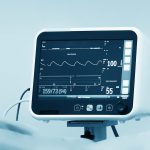EUROPE
1.MDCG releases long-awaited IVD classification guidance
The European Commission’s Medical Device Coordination Group (MDCG) released its much-anticipated guidance on the classification of in vitro diagnostics (IVDs) under the In Vitro Diagnostic Regulation (IVDR).
The nearly 50-page guidance is intended to explain how IVDs should be classified to manufacturers, notified bodies and healthcare providers before they are placed on the EU market and is seen as critical to industry’s ability to accurately classify diagnostics under the IVDR’s risk-based classification system.
Under IVDR, diagnostics are divided into four classes, A, B, C and D, from lowest- to highest-risk, based on their intended purpose and their inherent risks, with certain requirements applying only to the higher risk classes.
2.Important Information from Bulgarian Drug Agency Department control of Medicinal Products and Medical devices
As of November 9, 2020, for all procedures received through CESP, the requirement for submission of files (sequences) on electronic media (CD / DVD) is eliminated. For other procedures (marketing authorizations, renewal of marketing authorizations, changes to the RO), for which the dossiers (sequences) have not been submitted through CESP, the requirement remains valid.
3.Turkish Notified Body TSE (Notified Body number 1783) no longer available for European IVDD
The IVDD designation of the Turkish NB Turkish Standards Institution (TSE) has been suspended from October 15th, 2020. The TSE website no longer lists this service. No reason for the suspension has been provided by the European Commission or TSE, but it is likely this implies that TSE no longer wants to be designated under the IVDD for CE Mark certification services.
At this moment 21 NBs are still designated for the IVDD, and four have been designated for the upcoming In-vitro Diagnostic Medical Devices Regulation (IVDR).
For IVD manufacturers, the options for obtaining CE Mark certification for the IVDR before the Regulation’s Date of Application, May 26th, 2022, are still very limited. On top of that the coronavirus pandemic is limiting the ability of NBs to perform on-site audits.
US FDA
4.New Guideline: Regulatory Considerations for Micro needling Products
This guidance is being issued to assist industry in understanding when a micro needling product is a device as defined in section 201(h) of the Federal Food, Drug, and Cosmetic Act (FD&C Act), 21 U.S.C. § 321(h), and is, therefore, subject to the device requirements under the FD&C Act and its implementing regulations. This document also provides information on the regulatory pathway to market for micro needling devices for aesthetic use.
5.Certificates of Confidentiality; Guidance for Sponsors, Sponsor-Investigators, Researchers, Industry, and Food and Drug Administration Staff; Availability
The Food and Drug Administration (FDA or Agency) is announcing the availability of a final guidance entitled “Certificates of Confidentiality; Guidance for Sponsors, Sponsor-Investigators, Researchers, Industry, and Food and Drug Administration Staff.” This guidance is intended to explain FDA implementation of the revised statutory provisions applicable to the request for, and issuance of, a Certificate of Confidentiality (CoC). The 21st Century Cures Act (Cures Act) amended the statutory provisions relating to the issuance of CoCs. A CoC is intended to help protect the privacy of human subject research participants from whom sensitive and identifiable information is being collected or used in furtherance of the research. Historically, a CoC generally protected a researcher from being compelled in a legal proceeding to disclose identifiable sensitive information about the research participant, created or compiled for the research. As amended, a CoC prohibits a researcher from disclosing such information unless a specified exception applies. This guidance finalizes the draft guidance of the same title issued on November 25, 2019.
6.Clinical Trial Exemption (CTX) scheme renamed as Clinical Trial Approval (CTA) scheme
The Therapeutic Goods Administration (TGA) has changed the name of the Clinical Trial Exemption (CTX) scheme to the Clinical Trial Approval (CTA) scheme.
The name change from CTX to CTA more accurately reflects the nature of the scheme under the Therapeutic Goods Act 1989, which involves sponsors applying for the TGA’s approval to supply unapproved therapeutic goods in Australia via a clinical trial despite the therapeutic goods not being entered in the Australian Register of Therapeutic Goods (ARTG). The scheme’s previous name of CTX underscored the exemption given by the TGA to a sponsor from entering their therapeutic good in the ARTG before conducting a clinical trial.
The accompanying Clinical Trial Notification (CTN) scheme remains unchanged whereby any therapeutic goods used in clinical trials do not require evaluation and entry in the ARTG, although the TGA still needs to be notified of the sponsor’s intent to conduct a clinical trial involving the unapproved good.
The TGA has updated our online information and application forms to reflect this name change from CTX to CTA. For consistency, they ask that relevant agencies and stakeholders also update their own documentation. The names of the clinical trials schemes are not explicitly mentioned in therapeutic goods legislation, so the proposed change will only impact our online information, application forms, and the Australian clinical trial handbook.
Malaysia (MDA)
7. New Search System Announcement – Medical Device Authority Register (MDAR)
Malaysia’s Medical Device Authority (MDA) has changed the system it provides to enable the public to search for registered medical devices and establishments. The system currently displays search results for licensed establishment data and registered medical devices.
Japan (PMDA)
8.GS1 code link information with package inserts for medical devices and in-vitro diagnostic drugs
For barcodes on medical devices and in-vitro diagnostic drugs, see “Barcodes for medical devices, etc.” – Implementation of code display “(March 28, 2008, Medical Affairs and Economics No. 0328001. It is being operated based on the Ministry of Health, Labor and Welfare, Medical Affairs Bureau, Economic Affairs Section Chief Notification).” It is now possible to register the linking information of (GTIN-14).


